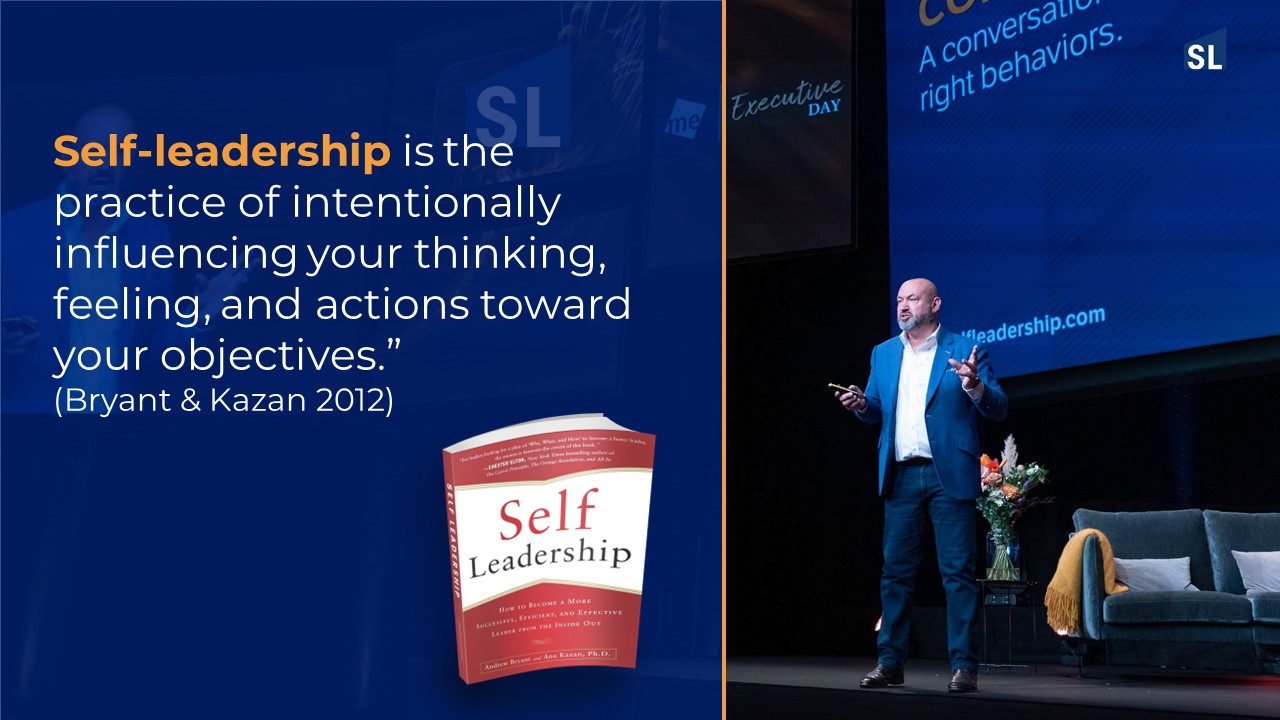Self-Leadership: The Key to Enhanced Productivity in a Post-Pandemic and Digital Age

In the wake of the global pandemic, the world has seen an accelerated shift toward digitalization. This shift has brought about new challenges and opportunities in the realm of productivity.
Increased productivity means greater output from the same amount of input. It means higher efficiency with which a company or economy can transform resources into goods and services. In short:
"Enhanced productivity is the opportunity to create more from less."
A sustainable increase in productivity occurs when individuals and teams can complete their work efficiently and tackle more complexity, whilst taking care of physical and mental health.
As we navigate this new landscape, the concept and practice of self-leadership have emerged as critical factors in enhancing productivity.
The Connection Between Self-Leadership and Productivity
Self-leadership is the learned ability to intentionally influence ourselves to achieve our objectives (Bryant and Kazan 2012). Rather than being an abstract concept, self-leadership forms the foundation for personal, team, business, and strategic leadership. It's about finding a balance between self and others, being responsible and responsive, and effectively carrying one's own weight.
In the context of productivity, self-leadership plays a pivotal role. It is the driving force behind our ability to control our disruptive impulses, work with transparency, adapt to changing situations, and strive for personal excellence.
When it comes to teamwork, self-leadership can mean the difference between successful, rewarding collaborations and difficult, unproductive work. Encouraging self-leadership within a team or organization leads to more collaborative, committed, and engaged employees.
Promoting Productivity with a Self-Leadership Culture
Self-leadership means accepting responsibility for your results. You don't blame other people and you don't make excuses. This can be challenging during times of uncertainty; however, a self-leader sees options and grasps opportunities when others are waiting to be rescued.
Everyone can practice self-leadership, but not everybody does. Self-leadership thrives in open cultures or where adaptive leadership is practiced. Adaptive Leadership (Heifetz, Linsky, Grashow) defines leadership as
“The practice of mobilizing people to tackle tough challenges and thrive”
One of the most important framings of adaptive leadership is the idea that leadership is not a job or based on authority but it is a practice that can be done by anyone. By divorcing leadership from role or authority we make space for ownership and collaboration.
For such a mindset and behavioral shift leaders must have the self-awareness to move beyond the framing of their experiences and overcome the tendency to go from crisis to crisis (firefighting).
Managers and leaders who fear a lack of control, or whose self-leadership is not up to the task of empowering a diverse team will, in my opinion, expand the leadership-employee gap and block the agility of the organization. The good news is that this mindset can be overcome.
Enhancing Productivity through Self-Leadership Strategies

With an open culture mindset in place, here are some strategies to enhance that individuals and teams can enhance productivity through self-leadership:
-
Increase Task's Natural Rewards: One way to enhance productivity is to increase the natural rewards associated with a task. This could involve determining places where the task can be performed in a more pleasant way, identifying activities that can be built into the tasks that could make work naturally rewarding, or focusing on the task’s pleasant aspects. For instance, if you enjoy the creative aspect of a task, emphasize and celebrate that part. Use that particular piece of work as a reward for having to deal with the less personally pleasant part.
-
Gratitude: Another strategy is to cultivate a sense of gratitude. Research suggests that a significant proportion of our happiness is under our own control. By focusing on what we have, our relationships, and what we are doing, we can increase our happiness and, in turn, our productivity.
-
Engagement and Decision Making: Much research has shown that engaged employees are more productive. When employees can be part of the decision-making, contributing to the ideas that will be put into practice, they own their actions, and they personally embrace customer satisfaction as their own personal goal. Encouraging self-leadership within a team or organization leads to more engaged employees.
- Self-regulation and Self-learning: Self-leaders take ownership of their own emotional and mental state and proactively adapt to new situations. Self-leaders take responsibility for learning new skills that will enhance their contribution and productivity. In a post-pandemic and digital age, this is a crucial strategy.
Conclusion
Self-leadership is a powerful but often overlooked tool for enhancing productivity. By fostering self-leadership skills, individuals and teams can become more effective, efficient, and successful in their endeavors. As we continue to navigate a rapidly changing world, the ability to lead ourselves will become increasingly important.
My motivational keynote speech, 'Driving Accelerated Results through Self-leadership', highlights the roadblocks to practicing and promoting self-leadership, and how to enhance productivity.
Feel free to contact me to find out more.
GET A FREE CHAPTER
THE NEW LEADERSHIP PLAYBOOK
BEING HUMAN WHILST DELIVERING ACCELERATED RESULTS



